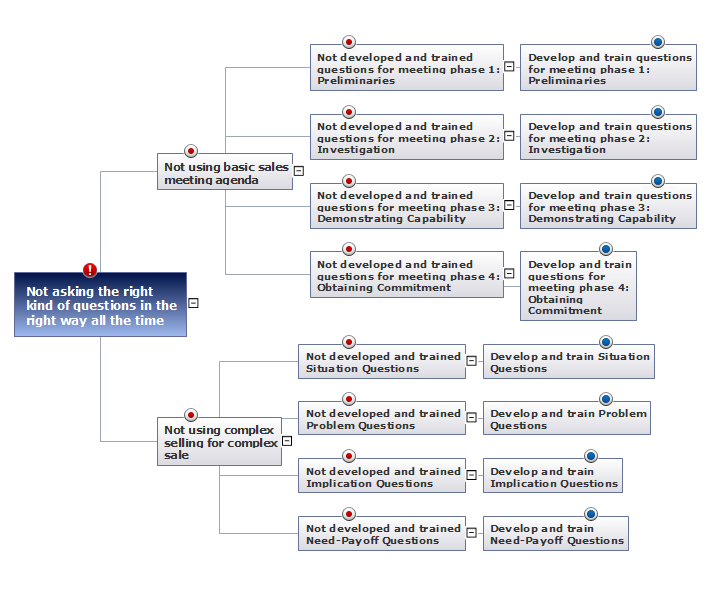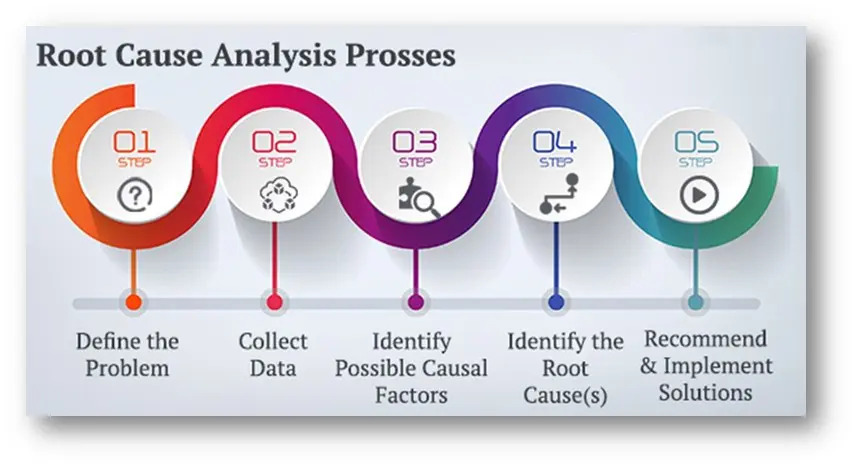“Problem Management: Unearthing the Root and Preventing Recurrence
Artikel Terkait Problem Management: Unearthing the Root and Preventing Recurrence
- Augmented Analytics: The Democratization Of Data Insights
- Integration Testing: Ensuring The Harmony Of Your Software Orchestra
- The Rise Of The Conversational Machines: A Deep Dive Into AI Chatbots
- Diving Deep Into Cloud APIs: Powering The Modern Digital Landscape
- Quality Assurance: The Cornerstone Of Excellence In A World Of Ever-Evolving Standards
Table of Content
Video tentang Problem Management: Unearthing the Root and Preventing Recurrence
Problem Management: Unearthing the Root and Preventing Recurrence
In the dynamic world of IT service management (ITSM), maintaining stability and ensuring seamless service delivery are paramount. While incident management focuses on quickly restoring services after disruptions, problem management takes a proactive approach by identifying the underlying causes of these incidents and implementing solutions to prevent them from recurring. This article delves into the intricacies of problem management, exploring its processes, benefits, and best practices, empowering you to effectively address recurring issues and enhance the overall IT service experience.
What is Problem Management?
Problem management is the ITIL-defined process responsible for identifying, analyzing, and resolving the root causes of incidents and preventing them from happening again. It’s not simply about fixing individual occurrences; it’s about digging deeper to understand the systemic issues that lead to those occurrences. Think of it as detective work, uncovering clues to expose the hidden vulnerabilities within your IT infrastructure.
Key Differences Between Incident Management and Problem Management:
While both incident and problem management are crucial components of ITSM, they serve distinct purposes:
- Incident Management: Focuses on restoring service as quickly as possible after a disruption. The goal is to minimize downtime and impact on users. It’s a reactive process.
- Problem Management: Focuses on identifying the root cause of incidents and implementing solutions to prevent them from recurring. The goal is to improve service stability and reduce the number of incidents. It’s a proactive process.
Think of it this way: If an incident is a flat tire, incident management gets you back on the road quickly. Problem management investigates why the tire went flat in the first place (e.g., a nail, worn tread) and takes steps to prevent future flat tires (e.g., patching the tire, replacing worn tires, avoiding areas with debris).

The Problem Management Process:
The problem management process typically involves the following stages:
Problem Identification: This involves recognizing that a problem exists. This can be triggered by:

- Reactive Problem Management: Identifying problems based on recurring incidents or a significant incident that has a high impact. Analyzing incident trends and patterns is crucial here.
- Proactive Problem Management: Identifying potential problems before they cause incidents. This can involve monitoring system performance, reviewing vendor documentation, or conducting risk assessments.
Problem Logging: Documenting the problem with sufficient detail. This includes:
- A clear description of the problem.
- Affected services and users.
- Associated incidents.
- Priority and impact assessment.
- Assigned problem owner.
Problem Categorization and Prioritization: Categorizing the problem based on its type (e.g., hardware, software, network) and prioritizing it based on its impact, urgency, and the resources required to resolve it. Common prioritization matrices consider factors like business impact, number of affected users, and the potential for recurrence.
Problem Investigation and Diagnosis: This is the core of the problem management process. It involves:
- Gathering information from various sources, including incident records, system logs, and user reports.
- Analyzing the data to identify the root cause of the problem.
- Using diagnostic tools and techniques to pinpoint the underlying issue.
- Collaborating with subject matter experts to gain insights and expertise.
Workaround Implementation (Optional): A workaround is a temporary solution that reduces or eliminates the impact of the problem without addressing the root cause. Workarounds can be useful in situations where a permanent solution is not immediately available. However, it’s crucial to remember that workarounds are not a substitute for a permanent fix.
Known Error Record (KER) Creation: Once the root cause is identified, a Known Error Record (KER) is created. This record documents the problem, its root cause, and any workarounds that have been implemented. The KER serves as a valuable resource for future incident resolution and helps to prevent the problem from recurring.
Resolution and Closure: This involves implementing a permanent solution to address the root cause of the problem. This may involve patching software, replacing hardware, or modifying configurations. Once the solution has been implemented and tested, the problem is closed.
Post-Implementation Review (PIR): After the problem is resolved, a PIR should be conducted to:
- Verify that the solution has been effective.
- Identify any lessons learned.
- Update documentation and procedures.
- Assess the overall effectiveness of the problem management process.

Benefits of Problem Management:
Implementing a robust problem management process offers numerous benefits, including:
- Reduced Incidents: By addressing the root causes of incidents, problem management helps to prevent them from recurring, leading to a significant reduction in the overall number of incidents.
- Improved Service Stability: By proactively identifying and resolving potential problems, problem management helps to improve the stability and reliability of IT services.
- Increased User Satisfaction: Fewer incidents and more stable services lead to increased user satisfaction and a more positive IT experience.
- Reduced Costs: By preventing incidents, problem management helps to reduce the costs associated with incident resolution, downtime, and lost productivity.
- Improved Knowledge Management: The problem management process generates valuable knowledge about the IT environment, which can be used to improve incident resolution, prevent future problems, and optimize IT operations.
- Enhanced Compliance: By addressing known vulnerabilities and implementing security patches, problem management helps to ensure compliance with regulatory requirements.
- Better Resource Allocation: By identifying and resolving underlying issues, problem management frees up IT resources that would otherwise be spent on resolving recurring incidents.
Best Practices for Problem Management:
To maximize the effectiveness of your problem management process, consider the following best practices:
- Establish Clear Roles and Responsibilities: Clearly define the roles and responsibilities of individuals involved in the problem management process, including the problem manager, problem analysts, and subject matter experts.
- Use a Standardized Process: Implement a standardized problem management process that is consistently followed across the organization.
- Integrate with Other ITSM Processes: Integrate problem management with other ITSM processes, such as incident management, change management, and configuration management.
- Use a Problem Management Tool: Utilize a problem management tool to track problems, manage workflows, and generate reports.
- Prioritize Problems Effectively: Prioritize problems based on their impact, urgency, and the resources required to resolve them.
- Focus on Root Cause Analysis: Invest the time and resources necessary to thoroughly investigate problems and identify their root causes.
- Document Known Errors: Create and maintain a comprehensive database of Known Error Records (KERs).
- Communicate Effectively: Keep stakeholders informed of the progress of problem investigations and the status of problem resolutions.
- Continuously Improve the Process: Regularly review and improve the problem management process to ensure its effectiveness.
- Embrace a Proactive Approach: Don’t just react to incidents; proactively identify and address potential problems before they cause disruptions.
Conclusion:
Problem management is an essential component of a well-managed IT environment. By proactively identifying, analyzing, and resolving the root causes of incidents, problem management helps to prevent recurrence, improve service stability, reduce costs, and enhance user satisfaction. By implementing a robust problem management process and following best practices, organizations can significantly improve their IT service delivery and achieve their business goals.
FAQ:
Q: Who is responsible for problem management?
A: The problem manager is typically responsible for overseeing the problem management process. They are responsible for ensuring that problems are identified, investigated, resolved, and documented effectively.
Q: How do I prioritize problems?
A: Problems should be prioritized based on their impact, urgency, and the resources required to resolve them. A common prioritization matrix considers factors like business impact, number of affected users, and the potential for recurrence.
Q: What is a Known Error Record (KER)?
A: A Known Error Record (KER) documents a problem, its root cause, and any workarounds that have been implemented. The KER serves as a valuable resource for future incident resolution and helps to prevent the problem from recurring.
Q: How does problem management relate to change management?
A: Problem management and change management are closely related. Changes are often implemented to resolve problems. Therefore, it’s important to ensure that changes are properly planned, tested, and implemented to avoid introducing new problems.
Q: What tools can I use for problem management?
A: Many ITSM tools include problem management functionality. These tools can help you track problems, manage workflows, generate reports, and maintain a database of Known Error Records.
Q: How can I get started with problem management?
A: Start by establishing clear roles and responsibilities, defining a standardized process, and integrating problem management with other ITSM processes. Gradually implement the process and continuously improve it based on feedback and lessons learned. Focus on identifying and resolving the most impactful problems first.


